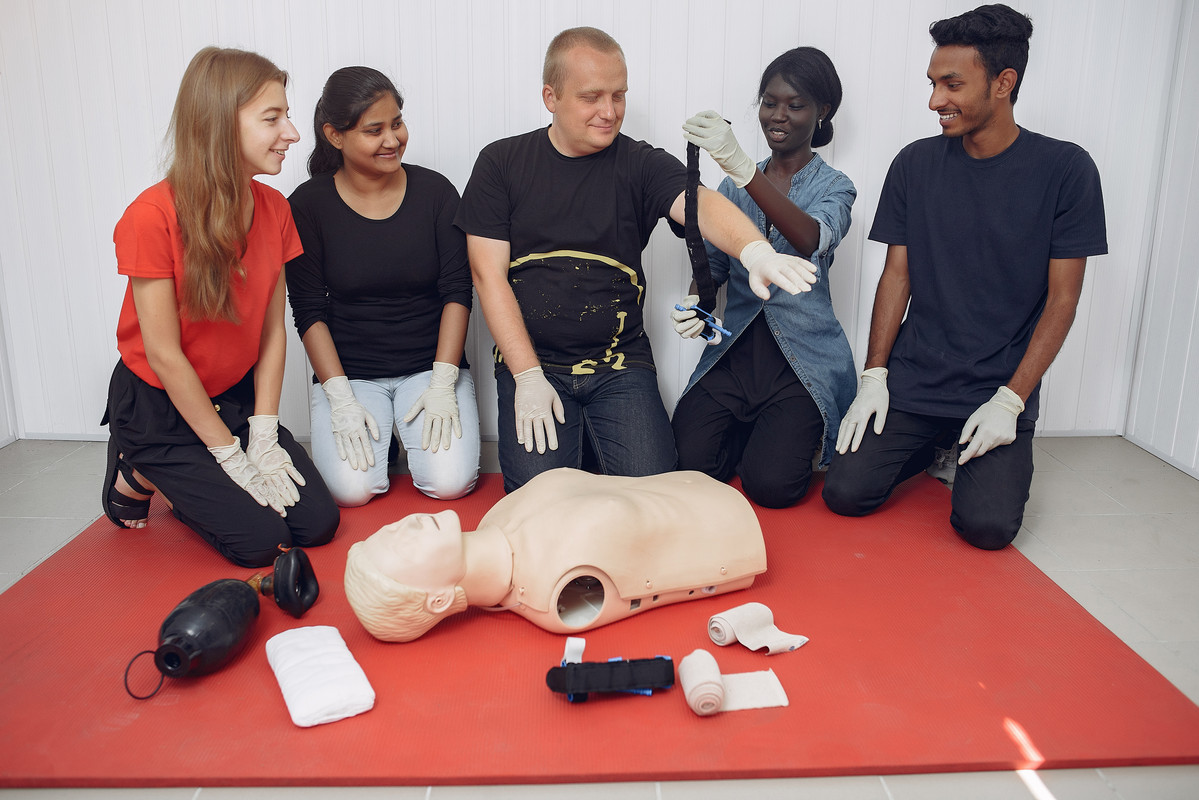Imagine you're at a family gathering, and suddenly your uncle collapses from a heart attack. Or you're at a park with your children, and one of them falls and suffers a severe injury. How do you respond in these emergency situations? Do you have the necessary skills to provide immediate and effective first aid? This is where first aid training courses come into play. In this article, we'll discuss the importance of first aid training, the types of courses available, and how to choose the right one for your specific needs.
The Importance of First Aid Training Courses
First aid training courses are essential because they teach you the skills needed to respond effectively and confidently in emergency situations. These skills can save lives, reduce pain and suffering, and prevent further injury or complications. First aid training is especially crucial for parents, teachers, caregivers, and workplace professionals, as they are often the first responders in emergencies involving children or colleagues. Moreover, having first aid certification can enhance your resume and make you a more valuable employee in many industries.
Types of First Aid Training Courses
There are various first aid training courses available, catering to different needs and situations. Let's explore some of the most common ones:

a. Basic First Aid Courses
These courses cover the fundamental principles of first aid, such as how to assess an emergency situation, call for help, and perform essential life-saving techniques. Topics may include treating burns, cuts, fractures, and choking, as well as managing shock, seizures, and poisoning. Basic first aid courses are suitable for everyone and are typically a prerequisite for more advanced courses.
b. CPR and AED Certification Courses
Cardiopulmonary Resuscitation (CPR) is a life-saving technique that can keep a person's blood circulating and oxygenated in the event of a cardiac arrest. These courses teach you how to perform CPR on adults, children, and infants, as well as how to use an Automated External Defibrillator (AED) safely. CPR and AED certifications are often required for professionals in healthcare, fitness, and education industries.
c. Workplace First Aid Courses
These courses are designed to meet the specific needs of various workplaces, such as construction sites, offices, and restaurants. They may cover topics like wound care, hazard identification, and emergency response planning. Workplace first aid courses often comply with Occupational Safety and Health Administration (OSHA) standards and may be required for certain job roles. Employers looking for a course tailored to workplace responsibilities should consider attending a fully accredited First aid at work training course in order to be an authority in their workplace for employee safety. Aid at Work programme that combines comprehensive theory with extended practical sessions. High quality providers can offer things like a regulated three-day format that meets Ofqual-recognised standards and is commonly delivered onsite for groups, allowing staff to practise realistic scenarios in their actual work environment. These courses typically limit delegate numbers to ensure hands-on experience and often include a course manual for reference after certification.
d. Pediatric First Aid Courses
Pediatric first aid courses focus on the unique needs of infants and children in emergency situations. They cover topics like infant CPR, choking, and managing common pediatric emergencies such as febrile seizures and allergic reactions. These courses are particularly valuable for parents, teachers, childcare providers, and pediatric healthcare professionals.
e. First Aid Instructor Courses
For those who want to teach others first aid, instructor courses provide the necessary training and certification. These courses usually require prior first aid experience and may involve teaching techniques, lesson planning, and assessment methods. Upon completion, graduates can instruct first aid courses and certify others.
Online vs. In-Person First Aid Courses
With advancements in technology, many first aid training courses are now offered online, providing a flexible and convenient option for those with busy schedules. Online courses typically involve a combination of videos, quizzes, and interactive simulations. However, in-person courses offer hands-on practice and feedback from qualified instructors, which is essential for mastering certain skills like CPR.
When choosing between online and in-person first aid courses, consider your learning style, schedule, and the specific skills you need to acquire. For some people, a combination of both online and in-person training may be the most effective approach.
How to Choose the Right First Aid Course

When selecting a first aid training course, consider the following factors:
- Your specific needs and goals: Are you a parent, teacher, or workplace professional? Choose a course that caters to your unique requirements.
- Accreditation and certification: Ensure the course is accredited by a reputable organization, such as the American Heart Association or the American Red Cross. This guarantees that the course follows industry standards and that your certification will be recognized by employers and institutions.
- Course duration and cost: Courses can range from a few hours to several days, and prices can vary significantly. Consider your budget and the time you can commit to training
- Instructor qualifications: Look for courses led by experienced and certified first aid instructors who can provide guidance and feedback
- Hands-on practice opportunities: Opt for courses that offer ample chances to practice the skills you learn, especially for techniques like CPR.
Conclusion
First aid training courses are essential for everyone, as they equip you with the knowledge and skills needed to respond effectively in emergency situations. With various types of courses available, including basic first aid, CPR certification, and workplace-specific training, there's a course to suit every need. Whether you choose an online or in-person course, ensure it's accredited, led by qualified instructors, and offers plenty of hands-on practice. By investing in first aid training, you can potentially save lives and make a difference in your community.

No comments:
Post a Comment